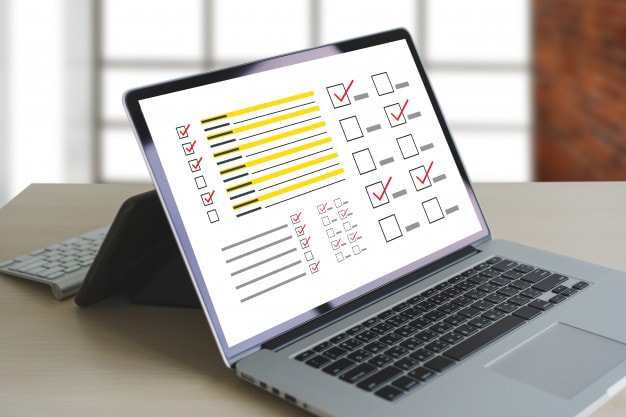Data is the backbone of any data analysis work which is carried on in the research process. Data analysis and interpretation work purely on the collection of various data from the sources. Data is called the unorganized statistical facts and figures that are collected from the respective sources. The researcher or analysts do the work of data collection for gathering information. The sources of data can be different depending on the need for the data for the research work.
The type of data also impacts the collection of data. All data is categorized into forms: primary and secondary data. Both types of data are gathered from different sources of data. The sources are reliable and are widely used for gathering specific information about the research work.
Table of Contents
What is Sources of Data?
Analysis of data is done by gathering all sources of data through primary research or secondary research. A data source is called the reservoir of statistical facts and figures or non-statistical figures drawn by the researcher or analysts to further process the research work.
The sources of data are mainly of two types:
- Statistical data sources
- Census data sources
Researchers widely use both data sources for research work. The data is collected through these data sources by primary or secondary research methods.
Types of Data Sources
Both the data sources are prevalent in the research field. It works efficiently in gathering information.
1. Statistical Data Sources
Statistical data sources are defined as the data sources implemented for official purposes through surveys and other statistical reports. Data collection here is done by asking several questions to the respondents that can be qualitative or quantitative. The qualitative data is the non-figure type, and the quantitative data sources are figure-driven sources.
Both types of statistical data are used for the data sampling method. Generally, a statistical survey is done by conducting a sample survey. The method includes collecting sample data and analyzing it later through the use of statistical methods and tools. The questionnaire method can also be used herein to conduct the surveys.
2. Census Data Sources
According to this method, the data is collected from the census report that is published earlier. It is the opposite of statistical surveys. The Census method is based on all the population items analyzed further for the research process. Here the data is collected over a specific period called reference time. The researchers conduct their research process at a particular time and analyze it further for a conclusion.
Census is carried out in the country for official purposes. The respondents are asked questions that are answered by them. This interaction can be face-to-face or telephonic. However, the census source of data is time-consuming and tedious as it involves the whole population.
Apart from the above data sources, some other sources of data are also considered for data collection. They are as follows:
Additional Sources of Data
1. Internal sources of data
Internal sources of data are called the sources from which the data are extracted from reports and records published in the organization.
The internal sources of data are used to do primary research on a given topic. All work of the research is easy for it. As a researcher, you can go for internal sources for data collection.
Different internal data sources include accounting resources, sales force reports, Internal Experts, and Miscellaneous Reports.
2. External sources of data
When the data collection is done outside of the organization, it is called an external source of data.
The data sources are external in every regard; as a researcher, you can work for external data collection.
The data collected from the external sources is more demanding because the data comprises a much greater variety, plus external sources can also be so many in numbers. Different classes in which external sources of data can be divided are-
Government Publications
With the help of Government sources, researchers can expect an extremely rich pool of data. Plus, many of such data are also free of cost available on the web.
Non-Government Publications
Researchers can also find different non-government publications that offer different industry-related data. The only downside of the non-government publications is that their data may be biased some of the time.
Syndicate Services
Certain organizations offer such services, and in the process, they collect and tabulate the marketing information consistently for different clients. Different approaches used by them for collecting data from households are surveys, mail diary panels, electronic services, whole-sellers, industrial firms, retailers, etc.
3. Experimental sources of data
Here in this source of data, the data is collected from the experiments and other related tools. All data are gathered through an experiment conducted by the researcher. Experiment-related data are statistical and factual.
Researchers can find out different experimental designs that can be used in carrying out experiments. The four experimental designs that are commonly used are-
CRD – Completely Randomized Design
In a completely randomized design (CRD), treatments are assigned randomly, so each experimental unit gets the same chance of receiving any treatment. It is available when experimental materials are homogeneous. This method is simple to understand, plus it comprises a fair amount of flexibility. It also offers the maximum number of degrees of freedom.
RBD – Randomized Block Design
It is the most commonly used experimental design in agriculture. It is understood as more accurate and efficient than the CRM method. It also offers better flexibility. Researchers also enjoy simple statistical analysis in RBD. However, it is not suggested for a huge number of treatments.
LSD – Latin Square Design
In LSD design, an experimental material is divided into m rows, m treatments, and m columns. In this method, statistical analysis is comparatively simple. It is also considered the most efficient design in comparison to the CRD and RBD. However, it is not useful for agricultural treatments, and it can also be daunting when treatments are more than one.
FD – Factorial Designs
Factorial experiments are used where the effects of more than one factor need to be determined. Researchers can use this for studying a problem that is affected by so many different numbers of factors.
Ways to Collect Data from its Sources
The data collection process includes acquiring, collecting, extracting, and analyzing the research work data. The data can be primary and secondary, all depending on the need of the research work.
Following are some of the ways that are used for collecting data from different sources:
1. By conducting interviews through surveys and questionnaire
Data can be collected in these ways efficiently. Conducting interviews for data collection is done from traditional times. The face to face interviews come in a personal approach that adds more value to the research work for data collection. Interviews are good for data collection from people. The questions asked in the interviews are mostly open-ended that are asked to respondents.
Interviews can be conducted in person (face-to-face) or telephonic. Furthermore, the interviews are open-ended and involve dialogues. The dialogues are the result of interaction between the researcher and the respondent. It is the part of primary research that paves the way for secondary research further.
2. By making small focus groups
The group discussions make the work of data collection easy and effective. As a researcher, you can create small focus groups for gathering factual information about the topic. The data are collected from the groups and used in the research process for analysis.
All focus groups have a moderator who stimulates the discussions over the respective topic. Mainly all types of business organizations implement focus groups as the research tool. They conduct focus group discussions to learn about the group of consumers for the organizations. Data collection is useful for organizations to gain information.
3. By Observation methods
Observatory methods are good in all terms. It is different from all other types of research methods. This method includes any indirect interaction between the researcher and the respondent. Here the consumer or respondent is observed by researchers silently.
The researchers make a note of their behaviors and reactions. Then they record the reactions in the form of observations. The work of observatory methods is to observe the respondent and then analyze the process silently.
4. By doing surveys out of questions
In traditional times, the surveys were conducted offline with the help of papers and pens. But with the advent of technology, surveys have changed their forms from offline to online medium. In today’s world, researchers conduct online surveys made up of questions to analyze many people. Online surveys are sent to respondents to gather information and data.
Online surveys have a benefit over offline mode surveys. It saves a lot of time, and it is convenient to use also. The survey forms can be sent to the respondents through emails. And the surveys are filled by the respondents through online medium only. The accessibility of online surveys is seen in every gadget, including smartphones, tablets, Ipads, personal computers, laptops, etc.
The online survey comes with a specific time given to the respondents for filling the survey questions for information. All answers are recorded at this time, and the researcher does the data compilation as part of primary research.
The questions asked in online surveys should be open-ended and should be worth answering. As a researcher, you should not make lengthy online survey questions as the respondents can lose interest in it. This is also an approach of primary research that is done to analyze the situation efficiently.
What happens after Data Collection?
Data analysis is the next step after data collection through primary or secondary research. It does not matter where the data came from. The recorded data have to be analyzed for a meaningful conclusion.
The researchers or analysts analyze the data to obtain meaningful information. The whole data analysis process is complex, but quite easy to do when you have distinct data sources. Several data analysis processes are known in present times. The modes of data analysis depend on the type of research one is performing. The data analysis is done either quantitatively or qualitatively. For this, the sources of data can be a qualitative type or quantitative type.
The data analysis makes the work of data interpretation and concluding it easy. The result is drawn out from the textual formats or figures of data. Data analysis works throughout the analysis process of data. It starts from the start point and concludes till the last.
The analysis process is continuous and cyclical along the length of the data evaluation and optimization process. The researchers and analysts collected data analysis to find meaningful connections and relationships among the recorded data. During data analysis, observe keenly the pattern occurring in the data formats or facts. It helps in drawing reasonable inferences from the data analysis.
Data is collected from any source, but the data analysis is done through some relevant methods only.
Final Thoughts!
Data collection sources play an essential role in the research process.
Without data, the research process is incomplete. In the preceding section, we have learned about the various data collection ways and other methods.
All data collection is done to conclude the meaningful conclusion from the analysis of the data.
How important do you consider the different sources of data that can help in the research process? What are your favorite ways of collecting data?
Liked this post? Check out the complete series on Market research


Love the way you explained! Thank you!